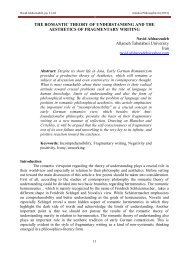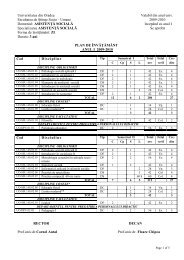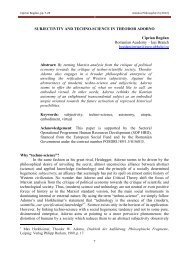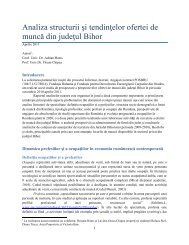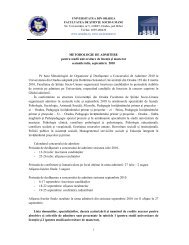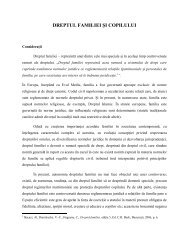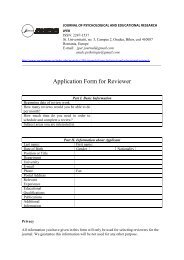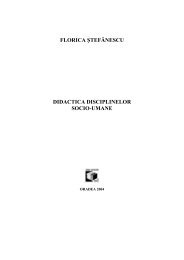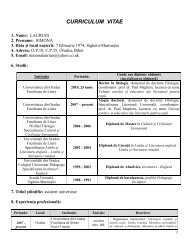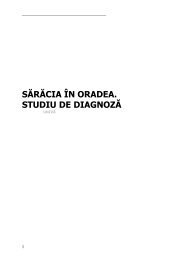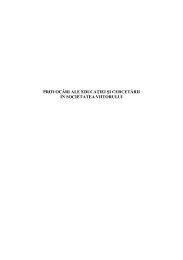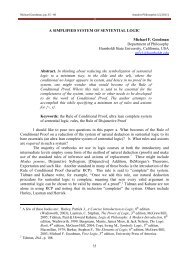Stephan Käufer: HEIDEGGER ON MINENESS AND MEMORY
Stephan Käufer: HEIDEGGER ON MINENESS AND MEMORY
Stephan Käufer: HEIDEGGER ON MINENESS AND MEMORY
Create successful ePaper yourself
Turn your PDF publications into a flip-book with our unique Google optimized e-Paper software.
<strong>Stephan</strong> <strong>Käufer</strong>, pp. 51 - 65 Annales Philosophici 2 (2011)<br />
working out this answer, Heidegger relies on other concepts associated with the originary past<br />
of Dasein‘s temporality: thrownness, facticity, repeating (Wiederholen) and handing down<br />
(überliefern). 8<br />
Heidegger is clear that the entire analysis of historicality in chapter 5 is rooted in his<br />
account of Dasein‘s temporality in chapter 3 (especially section 65) and chapter 4. All the<br />
basic notions of historicality are defined in terms of temporality. He writes, ―it turns out that<br />
the interpretation of the historicality of Dasein is basically just a more concrete elaboration of<br />
temporality‖ (SZ, p. 382). So historicality is not another existential feature besides<br />
temporality, but a way to spell it out in more concrete detail. The concreteness Heidegger<br />
wants to add lies in the specific possibilities that, in each case, Dasein exists as. While the<br />
existential analytic cannot say anything specific about actual possibilities of actual people, it<br />
can, he writes, ―ask in general, from where the possibilities are drawn, onto which Dasein in<br />
fact projects itself‖ (SZ, p. 383). The basic question Heidegger is seeking to answer with his<br />
analysis of historicality, then, is simply this: Why are these possibilities my possibilities?<br />
What explains, or what makes it possible, that a specific, concrete existence projects itself<br />
onto, or understands itself in terms of, specific possibilities? 9<br />
The basic answer has to do with taking over possibilities in coming back to your<br />
thrownness. Heidegger writes:<br />
Resoluteness, in which you come back to yourself, in each case<br />
discloses factical possibilities of authentic existing from the culture<br />
which, as thrown, you take on (übernimmt). Such resolute coming<br />
back to thrownness harbors within it a handing down to yourself<br />
(Sichüberliefern) of received (überkommener) possibilities (SZ, p.<br />
383).<br />
Most of this – namely the part about ―coming back to yourself‖ – repeats a central<br />
claim of Heidegger‘s analysis of temporality. The unity of the originary future, past and<br />
present makes up the being of care, and hence the structure of the self. The originary future is<br />
―maintaining a possibility as a possibility and in so doing letting yourself come towards<br />
yourself‖ (SZ, p. 325). You can only come towards yourself by way of coming back: ―Only<br />
insofar as you are as ‗I have-been‘ can you futurally come towards yourself in such a way that<br />
you come back‖ (SZ, p. 326). So it is part of the structure of temporality that in existing you<br />
come towards yourself by coming back to your beenness, to what you ―have-been‖.<br />
To illustrate this with an example: Say you are a philosophy professor listening to a<br />
paper at a conference. ―Letting yourself come towards yourself‖ here means, first, to project<br />
yourself onto this possibility, or (another way to say the same thing) to understand yourself in<br />
terms of this possibility, or (yet another way to say the same thing) to know how to be a<br />
professor at a conference. So your competences are deployed for the sake of being a<br />
professor. You know how to listen, strain, close your eyes, tilt your head etc. You know what<br />
to focus on and what to ignore, honing in on the drone of the speaker‘s voice, while blocking<br />
out the murmur of the wind outside. You also know how to carry yourself, when to chuckle,<br />
8 One way to think of birth is to spell out the analogy with death. Death is the possibility that closes<br />
down all other possibilities. So birth, we might say, is a feature of Dasein that opens up<br />
all possibilities.<br />
9 Here lurks another reading of birth: Death, as Dasein‘s ownmost possibility, constitutes Dasein‘s<br />
mineness. So birth, we might say, accounts for the ―thisness.‖<br />
55



